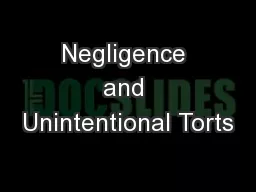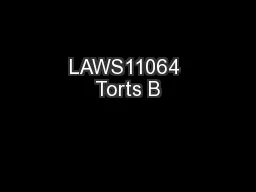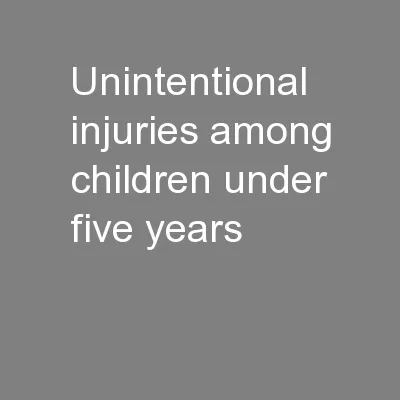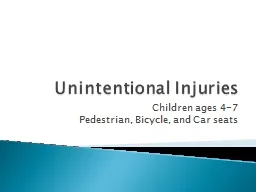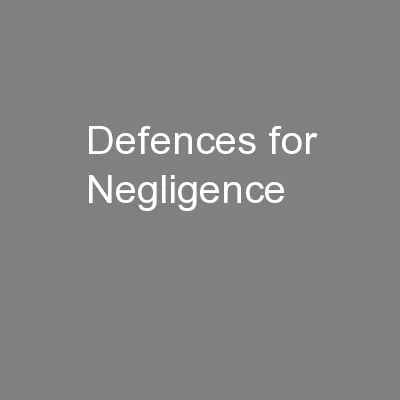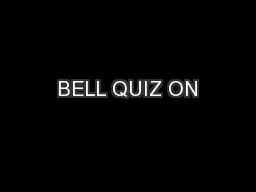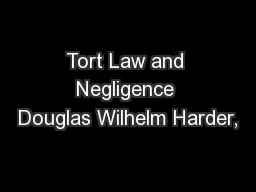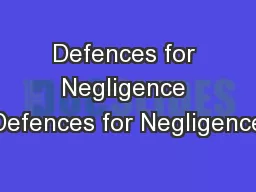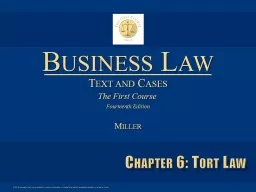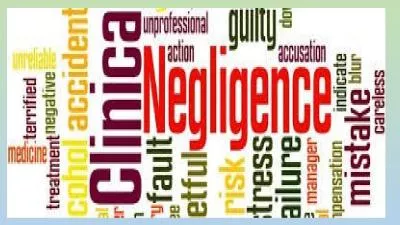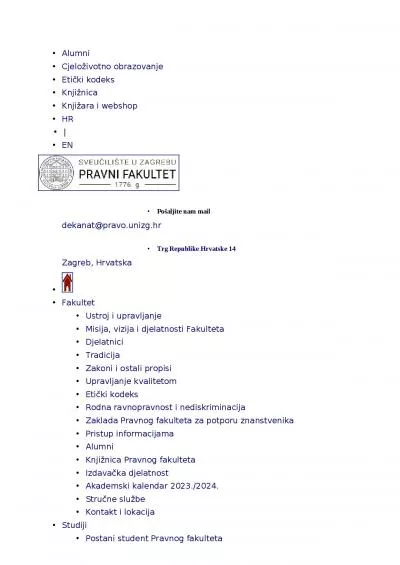PPT-Negligence and Unintentional Torts
Author : sherrill-nordquist | Published Date : 2015-11-27
Law in Action Ch 14 Tort a civil wrong damage to property or a personal injury caused by another person Unintentional Torts injuries that are the result of
Presentation Embed Code
Download Presentation
Download Presentation The PPT/PDF document "Negligence and Unintentional Torts" is the property of its rightful owner. Permission is granted to download and print the materials on this website for personal, non-commercial use only, and to display it on your personal computer provided you do not modify the materials and that you retain all copyright notices contained in the materials. By downloading content from our website, you accept the terms of this agreement.
Negligence and Unintentional Torts: Transcript
Download Rules Of Document
"Negligence and Unintentional Torts"The content belongs to its owner. You may download and print it for personal use, without modification, and keep all copyright notices. By downloading, you agree to these terms.
Related Documents

